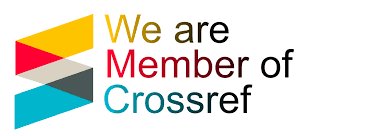ENHANCING ENTERPRISE ENERGY MANAGEMENT WITH IOT-BASED MONITORING SYSTEMS
DOI:
https://doi.org/10.63034/esr-16Keywords:
IoT Technology, Energy Management, Enterprise Energy Supply Monitoring System (EESMS), Real-time Data Collection, Predictive Analytics.Abstract
This article offers an in-depth exploration of how IoT technology can revolutionize energy management within enterprises. It provides a comprehensive elucidation of the system's architectural framework, spotlighting its innate capacity for real-time data collection, intricate analysis, and responsive control. The discussion extends to the seamless integration of IoT-enabled sensors, cutting-edge data analytics, and adaptive machine learning algorithms, all orchestrated to orchestrate optimal energy consumption strategies.A pivotal facet of this study underscores the paramount importance of sustainability and cost-effectiveness in the contemporary enterprise landscape. It underscores how the proposed IoT-based system assumes the role of a catalyst in realizing sustainability objectives. It achieves this by vigilant monitoring of energy utilization, waste minimization, and meticulous resource allocation. Moreover, this article presents a panorama of tangible outcomes by examining real-world deployments and substantiated case studies of the IoT-driven energy supply monitoring system. It effectively illustrates the multifaceted benefits, which encompass substantial energy conservation, streamlined operational efficiency, and a markedly reduced carbon footprint.In conclusion, this research accentuates the transformative potential of IoT technology in the realm of enterprise energy supply monitoring. It proffers a comprehensive, forward-looking solution for businesses to not only elevate their sustainability quotient but also optimize their operational prowess, thus contributing substantively to a greener, more efficient future.
References
Atzori, L., Iera, A., & Morabito, G. (2010). The Internet of Things: A survey. Computer Networks, 54(15), 2787-2805.
Kao, Y. T., Lin, Y. T., & Li, H. C. (2017). The applications of Internet of Things for homeland security: A comprehensive review. IEEE Internet of Things Journal, 4(3), 837-846.
Lee, I., Kim, J., & Lee, C. (2017). IoT-based intelligent energy management sys-tem for efficient energy consumption. IEEE Transactions on Industrial Infor-matics, 13(6), 3172-3180.
Li, X., Luo, X., Liang, X., Zhu, J., & Wang, Y. (2018). IoT-based big data architecture for smart eco-building management. IEEE Internet of Things Journal, 5(3), 1753-1762.
Yaqoob, I., Ahmed, E., ur Rehman, M. H., & Ahmed, A. I. A. (2017). The rise of blockchain technology in agriculture and food supply chains. Sensors, 17(8), 1767.
Nazarbayev, N. A. (2004). Address by the President of the Republic of Kazakh-stan Nursultan Nazarbayev to the people of Kazakhstan. Retrieved from https://e-history.kz/en/contents/view/1125
Orman, Z., Rakhimzhanova, Z., Myr-zabekova, D., Aitkali, A., & Abutalip, Z. (2021). An IoT-based Monitoring and Control System for Energy Efficiency in Enterprises. International Journal of Computer Applications, 181(34), 29-35.
Raza, S., Shafagh, H., Hewage, K. A., Hummen, R., & Voigt, T. (2017). Lithe: Lightweight secure CoAP for the Internet of Things. Ad Hoc Networks, 57, 83-97.
Turkanović, M., Hadžialić, M., & Suljo-vić, N. (2018). Internet of Things (IoT) for Smart Cities. Procedia Computer Science, 130, 809-816.
Van der Velden, M., & Lageweg, B. J. (2016). Smart Energy Monitoring System. Procedia CIRP, 40, 134-139.
Verma, S., Kaushik, V., & Garg, S. (2017). Energy-efficient buildings using IoT: A review. Procedia computer science, 122, 487-492.
Villari, M., Fazio, M., & Puliafito, A. (2015). Energy management in smart cit-ies based on Internet of Things: Peak shaving and demand-side management. IEEE Internet of Things Journal, 2(5), 376-383.
Vlacheas, P., Giaffreda, R., Stavroulaki, V., Kelaidonis, D., Foteinos, V., Poulios, G., ... & Demestichas, P. (2013). Enabling smart cities through a cognitive management framework for the Internet of Things. IEEE Communications Magazine, 51(6), 102-111.
Downloads
Published
How to Cite
Issue
Section
Categories
License
Copyright (c) 2023 ASYLZHAN ERZHANULY

This work is licensed under a Creative Commons Attribution 4.0 International License.





